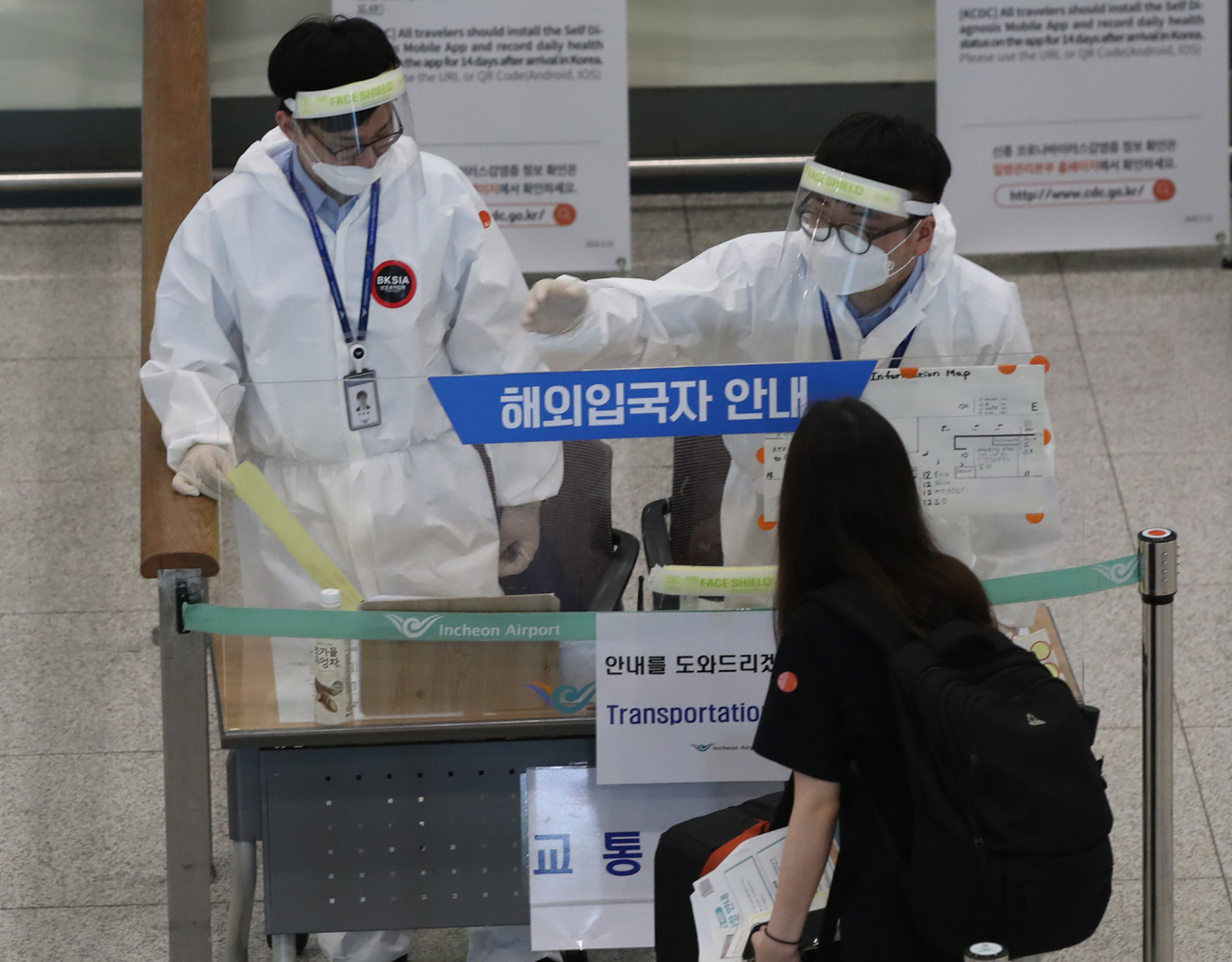 |
(Yonhap) |
All foreign arrivals from countries with a high infection rate of the novel coronavirus will be required to submit a negative COVID-19 test result to be allowed entry to South Korea, health authorities said Friday.
Starting Monday, foreign nationals from countries that the government has internally designated as “high-risk” countries will have to submit certificates issued within 48 hours proving they tested negative for the coronavirus on a polymerase chain reaction test.
Even with the proof, they still need to self-quarantine for two weeks at designated facilities or at home, depending on their visa status, and get tested for the virus within three days of their arrival.
As for the list of “high-risk” countries, Yoon Tae-ho, a senior Health Ministry official, refused to reveal it citing diplomatic reasons and the standards for designating such countries. The list is revised weekly after monitoring the coronavirus situation in each country, according to the official.
Those without the proof of the negative test result will not be allowed to board flights to Korea and they could face deportation even if they arrive here, he said.
The requirement came as the government seeks to stem imported cases and restrict the inflow of foreign nationals traveling to Korea unnecessarily. Despite the rule that requires all international arrivals to self-quarantine for two weeks, Korea is seeing a growing number of inbound travelers.
Of the 736 cases reported in the past two weeks, imported cases accounted for 38.2 percent, mostly from Kazakhstan, Pakistan and Bangladesh – key exporters of seasonal and migrant workers to Korea.
Korea reported 45 new COVID-19 cases Friday – 22 cases locally transmitted and the rest imported from overseas, according to the Korea Centers for Disease Control and Prevention. The total caseload rose to 13,338.
Of the 23 imported cases, four people were detected during the quarantine screening process at the border and the rest while under home quarantine after arrival. A total of 15 people were from Asia – including six from Kazakhstan – five from the Americas and three from Europe.
Of the country’s total 1,791 imported cases, 35.6 percent of the cases were from the Americas, followed by Asia excluding China at 34 percent, Europe at 28.1 percent, Africa at 1.2 percent, China at 1.1 percent and Australia at 0.1 percent. Some 55 percent of them were detected after they already entered the country, while the rest during the quarantine screening process at the border. The vast majority of the cases, or 72.6 percent, involved Korean nationals.
As for locally transmitted cases, seven cases were registered in Seoul and Daejeon, respectively. Three cases were reported both in Gwangju and Gyeonggi Province. Two cases were reported in South Jeolla Province.
So far, 12,065 people, or 90.6 percent, have been released from quarantine after making a full recovery, up 46 from a day earlier. Some 985 people are receiving medical treatment under quarantine.
One more person died, bringing the death toll to 288. The overall fatality rate stands at 2.16 percent -- 2.64 percent for men and 1.79 percent for women. The rate is much higher for those in their 80s or over at 25.26 percent and those in their 70s at 9.33 percent.
The country has carried out 1,384,890 tests since Jan. 3, with 23,527 people awaiting results as of Thursday.
By Ock Hyun-ju (
laeticia.ock@heraldcorp.com)








![[Today’s K-pop] Blackpink’s Jennie, Lisa invited to Coachella as solo acts](http://res.heraldm.com/phpwas/restmb_idxmake.php?idx=644&simg=/content/image/2024/11/21/20241121050099_0.jpg)